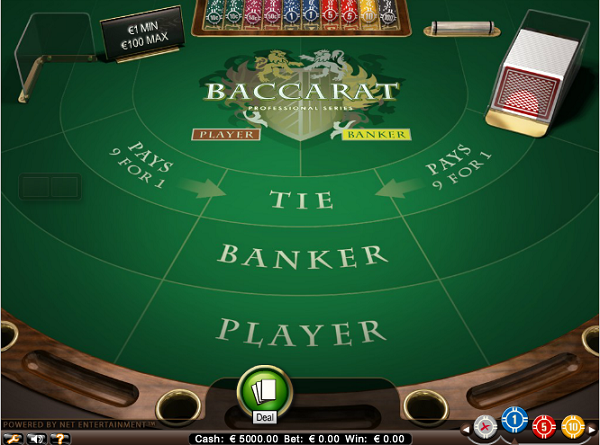Baccarat is a card game which is played at several casinos. There are three popular variants of the game: punto banco, baccarat chemin de fer and baccarat banque. Punto banco is strictly a game of chance, with no skill or strategy involved; each player’s moves are forced by the cards the player is dealt. In baccarat chemin de fer and baccarat banque, by contrast, both players can make choices, which allows skill to play a part. Despite this, the winning odds are in favour of the bank, with a house edge no lower than around 1 percent.
Baccarat table games

Absolutely, Baccarat is a popular card game often associated with luxury and high-stakes gambling. Given your interest in comprehensive information, let’s explore the game in depth, covering its rules, variants, strategies, and how it adapts in the crypto-gaming landscape.
Rules and Gameplay:
- Objective: The goal is to bet on the outcome that you think will have a point total closest to 9. You can bet on the ‘Player’, ‘Banker’, or a ‘Tie’.
- Card Values: Aces are worth 1 point, cards 2-9 are at face value, and 10, Jack, Queen, and King are worth zero.
- Dealing and Scoring: Two cards are dealt to both the ‘Player’ and the ‘Banker’. If the total goes over 9, only the last digit is used. For example, a total of 16 would be counted as 6.
- Third Card Rule: Depending on the totals, a third card may be drawn for either or both the ‘Player’ and the ‘Banker’.
Popular Variants:
- Punto Banco: The most common version where the casino banks the game at all times.
- Chemin de Fer: Popular in France, this version allows players to take turns being the banker.
- Baccarat Banque: Similar to Chemin de Fer but the role of banker is more permanent.
- Mini-Baccarat: A simplified, faster-paced version played on a smaller table.
- Progressive Baccarat: Features a side bet that can pay out a progressive jackpot.
- Live Dealer Baccarat: Provides a real-life casino experience with a live dealer streamed online.
Strategies:
- Betting Systems: Systems like the Martingale, Paroli, or Fibonacci are often applied, although none guarantee success.
- Banker Bet: The ‘Banker’ bet generally has the lowest house edge, making it a commonly recommended option.
- Avoid Tie Bet: The ‘Tie’ bet offers the worst odds and should generally be avoided.
- One-Sided Strategy: Some players opt to continuously bet on either the ‘Player’ or the ‘Banker’ throughout a session.
Crypto Baccarat:
- crypto is the speed and privacy of transactions.
- Provably Fair: Some crypto casinos offer provably fair Baccarat games, allowing for transparent verification of each hand’s outcome.
- Bonuses and Promotions: Crypto-based platforms often provide exclusive bonuses for crypto users, enhancing your potential returns.
Risk Management:
- Bankroll Management: Set a budget and stick to it to mitigate losses.
- Understand Commissions: Some casinos charge a commission on ‘Banker’ bets, usually around 5%. This affects the payout and should be factored into your strategy.
- Session Limits: Setting time or win/loss limits can help you maintain a more disciplined approach.
Advanced Insights:
- Card Counting: Although difficult and less effective than in games like Blackjack, some players attempt card counting in Baccarat to gain an edge.
- Pattern Recognition: Players often keep track of past outcomes to predict future results, although this is generally considered ineffective due to the game’s random nature.
- Side Bets: Some versions offer side bets like ‘Perfect Pair’ or ‘Dragon Bonus’. These add variety but usually come with a higher house edge.
With this extensive guide, you should have a thorough understanding of Baccarat, from its basic rules to its more complex strategies and adaptations in the crypto world. If you want to explore any specific topic further, feel free to ask.
